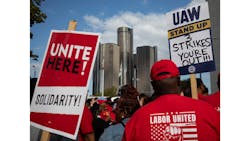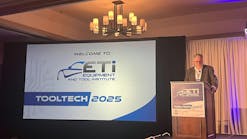On September 14, after failing to reach agreements on new contracts with Ford, General Motors, and Stellantis, around 12,700 workers (or nine percent of the UAW membership) walked off the job at a Ford plant in Wayne, Michigan, a GM plant in Wentzville, Missouri, and a Stellantis plant in Toledo, Ohio.
As more workers continue to step out of their jobs, the effects of their striking continues to reach all parts of the automotive industry and beyond.
The demands
Many factors have contributed to the unrest among automotive workers, namely the rising costs of living, industry-changing technology, and the effects of the COVID-19 pandemic. During the pandemic and its aftermath, many autoworkers have struggled and still struggle to make ends meet, while the profits of Detroit's car companies — and the compensation of their executives — have continued to increase.
Current demands from the UAW include about 40 percent pay increase; a four-day workweek with overtime pay beyond 32 hours; union representation at new electricity battery plants; and the end of employment tiers which have created distinct classes of employees.
Shawn Fain, UAW president, has used escalating tactics, public discussions, and bold demands to help draw attention to the inequality between bosses and workers in the industry. The platform he ran on was centered around ending concessions and taking a tough stance on negotiations. His leadership and pro-union mentality have helped many autoworkers to stand up against what they feel is unjust.
The impacts
According to an analysis of the strike's fiscal impacts by Anderson Economic Group (AEG), the strike has cost $3.95 billion, including more than a billion in losses for the Detroit Big Three. Out of that number, $325 million is lost wages.
In Ohio and Indiana, General Motors has laid off 164 workers, while Ford, in Illinois and Ohio, has laid off 330 workers.
“The economic spillovers from the UAW strike remain contained as we near the two-week mark,” said Gabriel Ehrlich, an economic forecaster at the University of Michigan. “We are seeing some layoffs among automotive suppliers, ranging from seat makers to steelworkers. We would expect these impacts to accumulate as the strike persists and additional targets are announced.”
While the strike aims to make the automotive industry fairer and more positive for its workers, some are worried that the negative effects of the halt on work might lead consumers to turn against the UAW. As the strike continues to get larger, more customers and suppliers will be affected.
The Milwaukee Journal Sentinel talked to Layth Alwan, a professor of supply chain economics at the University of Wisconsin-Milwaukee's Lubar School of Business, about the effects Wisconsin might see in the wake of the strike.
"My concern here is that in Wisconsin, and again nationwide if this strike extends a long amount of time, there'll be cascading effects, potential shutdowns, potential bankruptcies," he said. "And I think the most vulnerable suppliers would be the smaller suppliers who just barely even got through the COVID shutdown period."
If the strike continues, Alwan predicts that the country will see shutdowns and bankruptcies in the automotive industry. These potential disruptions might even have the ability to trickle into other industries like the trucking industry as fewer car parts are being made and with the deceleration of the supply chain, there will be less of a need for trucks to move parts. With fewer cars and trucks being purchased, insurance and leasing companies will also feel a sting.
The first to be affected by the shift in these industries will most likely be independent repair shops and distributors.
President Joe Biden joined the picket line in Belleville, Michigan, addressing them with a statement he gave alongside Fain.
"This is a historic moment," said Fain. "The first time in our country's history that a sitting U.S. president has come out and stood on the picket line."
Finding a solution
With about 25,000 UAW-represented autoworkers striking at General Motors, Ford, and Stellantis, things don't seem to be slowing down. Fain expanded the strike to include workers at 38 parts distribution facilities nationwide.
Despite the strike, negotiations between the union and the automakers have continued as both sides have agreed to resume. Talks with Stellantis earned the company exclusion from the strike's expansion on September 29, but no agreement has been reached.
While Fain's approach to negotiations has seemed to make the UAW some headway, carmakers have been critical of his tactics. They argue that he is more concerned with being political than reaching a deal. No agreements have been reached with any of the Big Three companies.


